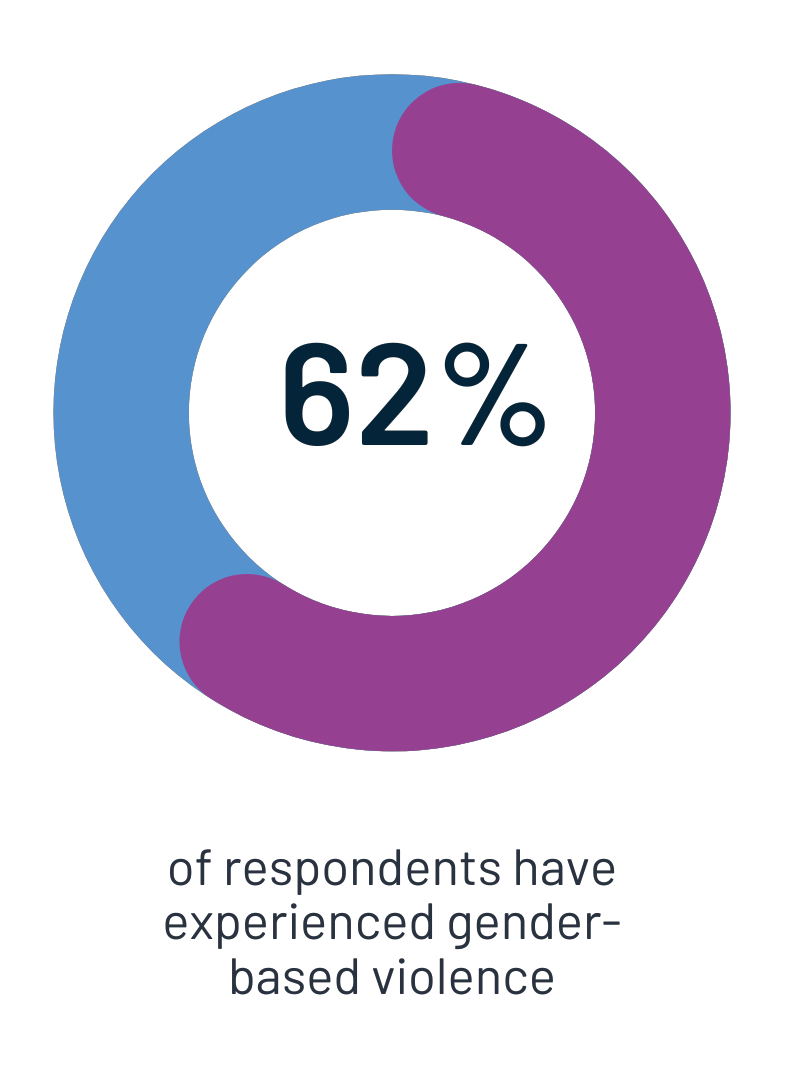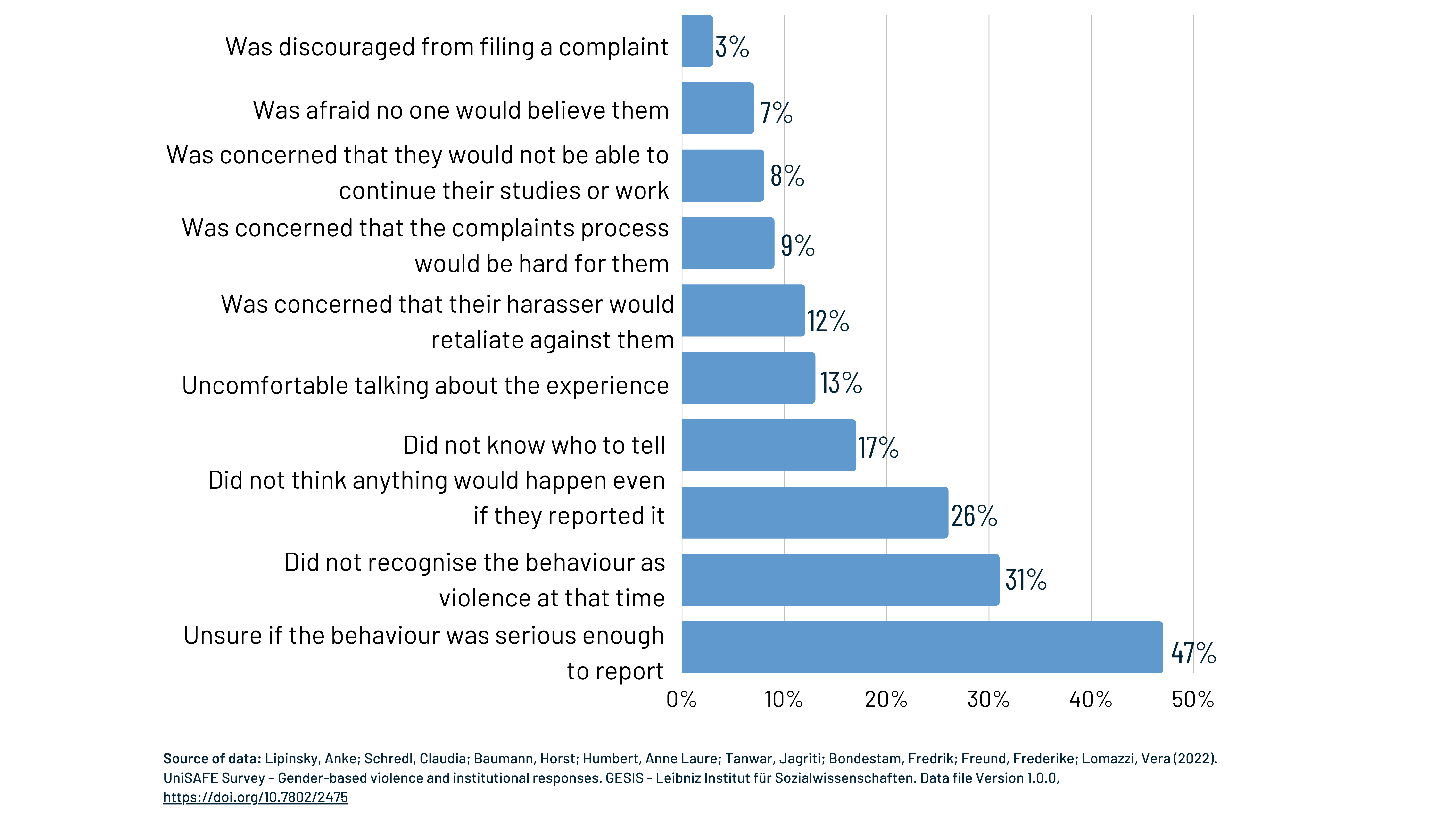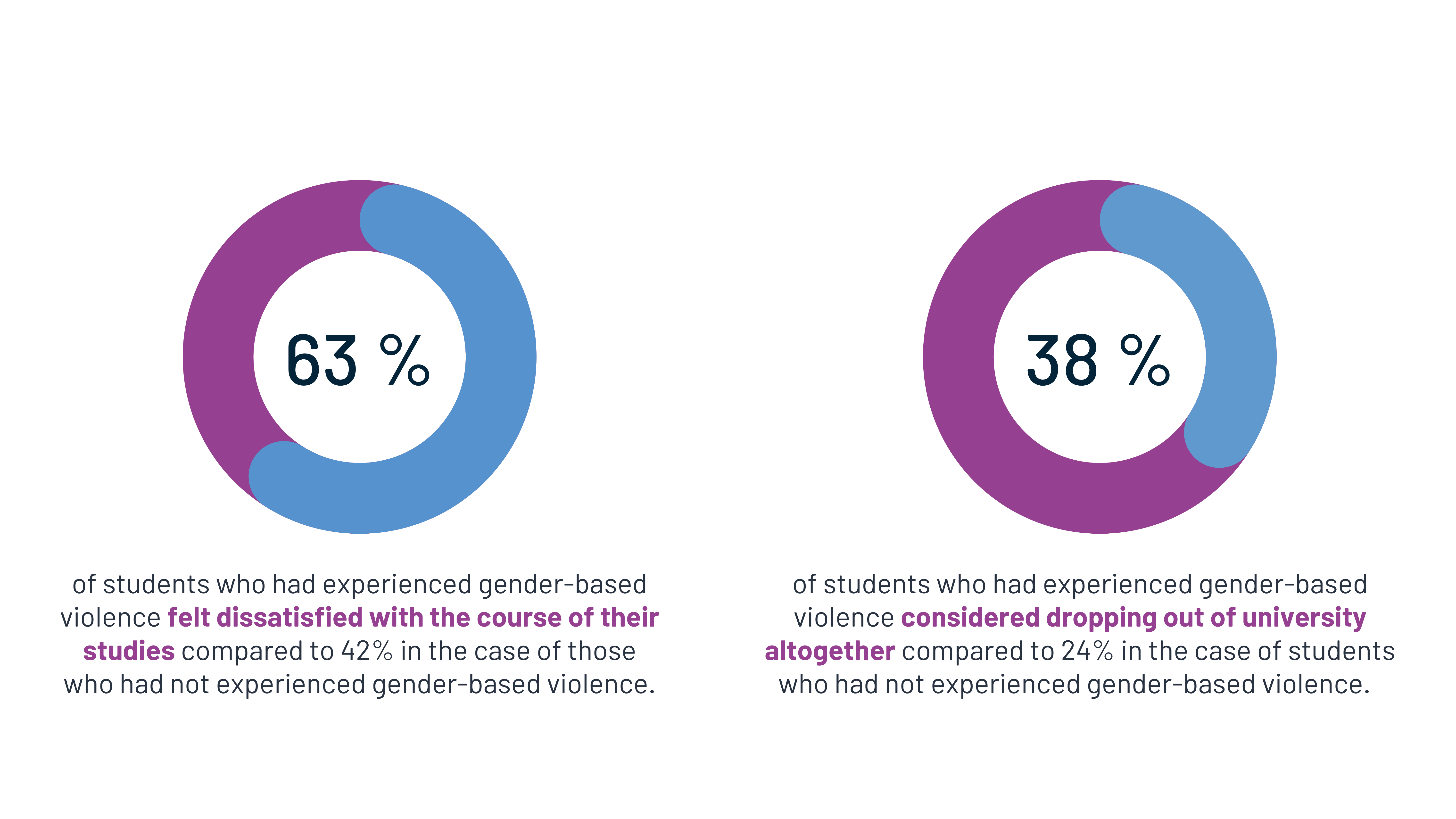Facts & Figures
Between January and May 2022, UniSAFE coordinated the implementation of a survey among 46 participating universities and research organisations in 15 countries in Europe to collect measurable evidence on the prevalence of gender-based violence in academia and research. With over 42,000 responses from staff and students, the survey is the largest conducted so far in the European Research Area.
The prevalence of gender-based violence is defined as the proportion of respondents who have experienced any form of gender-based violence asked about in the survey since they started working or studying at their institution. These different forms of gender-based violence consist of physical violence, psychological violence, economic violence, sexual violence, sexual harassment, and online violence. More information on how gender-based violence is defined in the project can be found here.
Overall, the results show that 62% of the survey respondents have experienced at least one form of gender-based violence since they started working or studying at their institution.

Respondents who identify as LGBQ+* (68%), who reported a disability or chronic illness (72%), and those belonging to an ethnic minority group (69%) were more likely to have experienced at least one incident of gender-based violence, compared to those who do not identify with these characteristics.
Note: The UniSAFE survey offers the opportunity to break down data based on various sexual orientations and gender identities, allowing to gain a deeper understanding of the connection between sexual orientation, gender identity, and experiences of gender-based violence. The survey results provide estimates for LGBQ+ categories, non-binary, intersex and trans people. This differentiation provides insights that are more nuanced and allows to formulate tailored recommendations.
Almost 1 in 3 respondents have experienced sexual harassment
Psychological violence is reported as the most prevalent form of violence (57%). Moreover, almost one in three students and staff say they have experienced sexual harassment within their institution (31%), whereas 6% of respondents have experienced physical violence, and 3% sexual violence. One in ten respondents reported that their work or studies have been harmed by economic violence. Eight percent of the respondents have experienced online violence since they started working or studying at their institution.
Low reporting of gender-based violence incidents
Among respondents who had experienced gender-based violence, only 13% reported it. Almost half of the victims (47%) explained that they felt uncertain whether the behaviour was serious enough to be reported. Another frequent reason indicated by 31% of the victims is that at the time of the incident they did not identify the behaviour as an act of violence.

Reasons for not reporting incidents of gender-based violence
Among the reasons for not reporting events of gender-based violence, almost half of the victims (47%) said they felt uncertain whether the behaviour was serious enough to report it. Another frequent reason for not reporting was that victims do not always recognise the behaviour as violence at the time of the incident, indicated by 31% of the victims.

Consequences of gender-based violence
Gender-based violence has consequences on individuals, organisations, and society as a whole. When individuals experience gender-based violence, their mental and physical health is affected, making them feel socially excluded, unsafe, and unwell. Thus, their academic and professional growth are consequently impacted by this.








 The contents of this website were developed by Yellow Window and do not necessarily reflect the views of the EC. This project has received funding from the European Union’s Horizon 2020 research and innovation programme under grant agreement no. 101006261
The contents of this website were developed by Yellow Window and do not necessarily reflect the views of the EC. This project has received funding from the European Union’s Horizon 2020 research and innovation programme under grant agreement no. 101006261